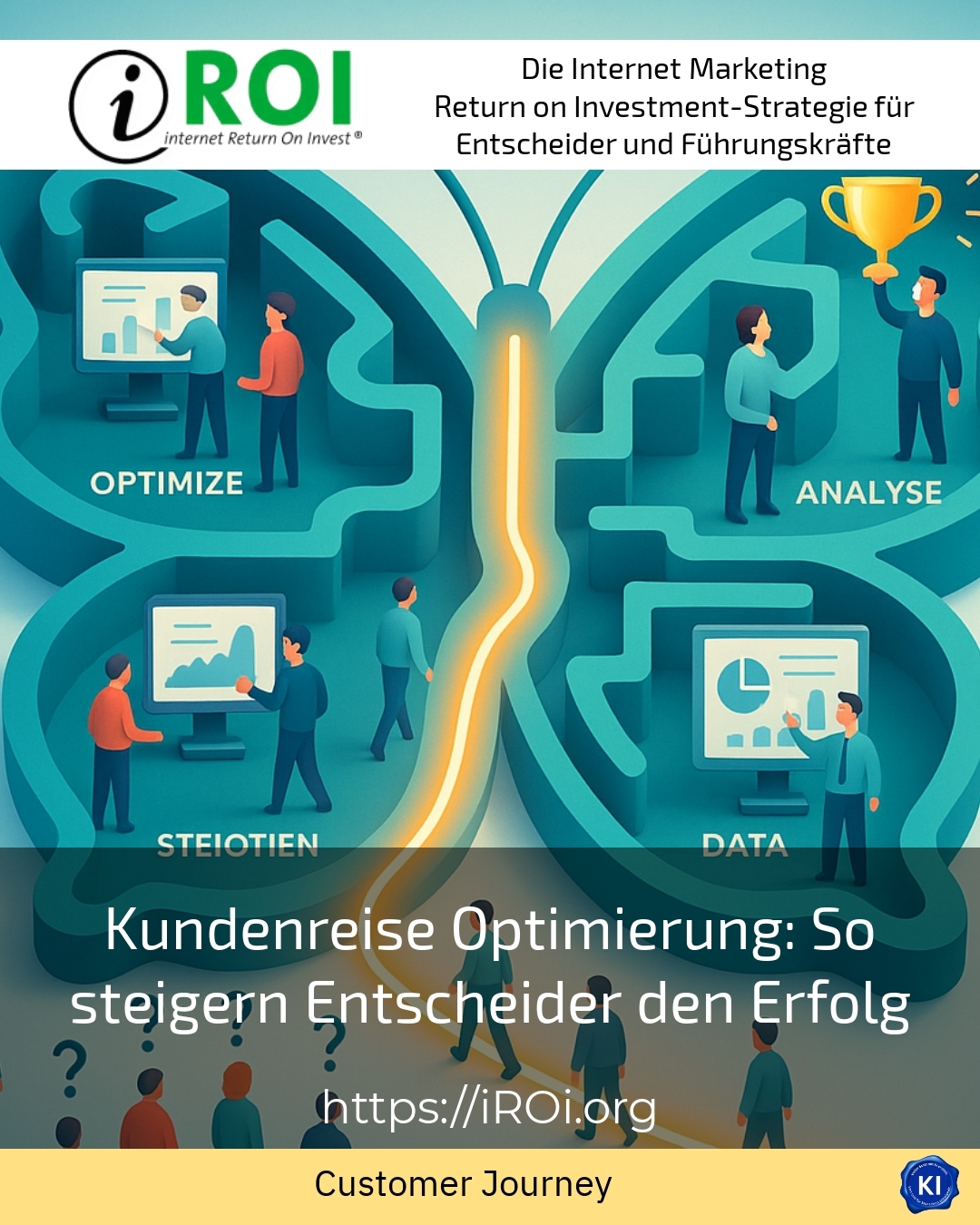The importance of a well thought-out customer journey optimisation
Customer journey optimisation is an essential component of modern corporate strategies. It helps decision-makers to improve their customers' journey from first contact to purchase and beyond. It is not only about recognising touchpoints, but above all about accompanying customers with relevant impulses that create a positive experience and thus support the success of a project.
Decision-makers often come to me with questions about how to analyse customer journeys, identify relevant touchpoints or eliminate pain points that prevent customers from buying. It is by no means helpful to start a project with absolute promises. Rather, customer journey optimisation means providing impetus and developing solutions that dynamically adapt to the needs of the target group.
How customer journey optimisation projects can be designed
A proven approach often begins with detailed mapping of the customer journey. This involves recording all phases and contact points - from initial awareness to purchase and subsequent loyalty. Companies can use this data to identify specific weak points and derive measures. This always requires the customer's perspective, which can be mapped using personas or customer profiles.
In industries such as telecommunications, for example, project managers often report that the complexity of many customer channels is difficult to penetrate. A careful analysis shows where information gaps or lengthy processes cause frustration and where targeted relief can be provided. Dealers in the automotive sector also approach me to better structure the digital buying journey and reduce friction losses at digital touchpoints.
BEST PRACTICE at company XYZ (name changed due to NDA contract) In a project in the financial services sector, a detailed touchpoint analysis was used to determine the cause of cancellations in the online application process. Targeted improvements in user guidance and faster responses in the chat significantly reduced the cancellation rate. It was important not only to introduce technical solutions, but also to support customers with advice at every step.
Practical examples and industry reference
E-commerce also offers a variety of starting points for optimising the customer journey. Decisions here are often impulsive, but customers also expect smooth and intuitive navigation as well as reliable information. Retailers report that small adjustments such as simplifying the checkout or personalised product recommendations can significantly increase the conversion rate.
In the tourism industry, it is clear how important it is to create a consistent experience across different channels. Customers often start by researching on social media, enter via travel portals and ultimately book via the website. Consistent optimisation of the customer journey supports decision-making processes and strengthens customer loyalty.
BEST PRACTICE at company XYZ (name changed due to NDA contract) In a project with a medium-sized craft business, the customer journey on the phone and online was analysed. Workshops were used to sensitise employees to key touchpoints - such as making appointments and aftercare. Customers have since reported a more pleasant experience and the company has a higher recommendation rate.
Important aspects and impulses for decision-makers
Successful customer journey optimisation is primarily about the question of how decision-makers support clients in the long term. It is advisable to continuously obtain feedback and analyse data in order to find the right individual adjustments. Clients often report that the dovetailing of digital and analogue experiences is crucial.
In addition to technical improvements, impetus for improvement can also be found in the development of empathetic customer service. Because at some touchpoints, it's not just efficiency that counts, but also a feeling of appreciation and trust.
BEST PRACTICE at company XYZ (name changed due to NDA contract) Customer surveys conducted by a provider of healthcare products revealed that prospective customers were unsure about product selection. An accompanying service was introduced, offering advice by phone and chat. This service makes a significant contribution to building trust and retaining customers in the long term.
My analysis
The implementation of customer journey optimisation is a dynamic process that supports decision-makers in implementing successful projects over the long term. Support through individual analyses and targeted impulses creates ways to guide customers through the individual phases of their journey in an uncomplicated and appreciative manner. An open view of new and familiar touchpoints and consistent data analyses are crucial for sustainable success.
Further links from the text above:
[1] Customer journey optimisation: definition & implementation
[2] Customer journey touchpoints: Optimising customer interaction at every stage
[4] Customer journey - how to optimise your customers' journey in 2025
[5] E-Commerce Marketing Funnel: Phases, Examples And Case Studies
[7] Customer Journey: Definition, Phases & Examples | ADITO
For more information and if you have any questions, please contact Contact us or read more blog posts on the topic TRANSRUPTION here.
















